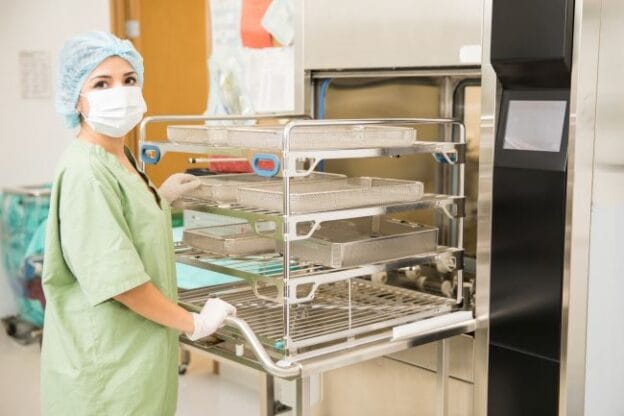BY William Leiva
Attendees of the Healthcare Sterile Processing Association (HSPA) Annual Conference and Expo may have noticed that many presentations and booths focused on productivity. Productivity is often measured in terms of efficacy, efficiency, process time, reduced manual labor, reduced consumable usage, increased reuse, and more.1 Improvement strategies explore how technology may help address the needs for increased productivity and how to effectively quantify the improvements. Innovations such as robotic tables that wrap sterilization trays or carts that automatically load onto washer-disinfectors (WD) are commonly displayed at conferences and expos.
Learning Objectives
- Understand the basic elements of productivity in a sterile processing department.
- Describe examples of how automatic equipment may increase SPD productivity.
- Discuss the balance between automatic equipment and human resources to achieve desired sterile processing department productivity levels.
About the Author
William Leiva MBA – MPH is currently a Subject Matter Expert on Medical Devices Sterilization and Reprocessing and is currently the Senior Program Manager for Sterile Reprocessing with Medtronic. He holds undergraduate degrees in physics and engineering and master’s degrees in business administration and public health, where he focused his research on infection prevention strategies involving medical device reprocessing. He is currently a candidate for a Ph.D. in Cybernetics and Econometrics, researching around the economic impact of the burden of premature mortality. He has published peer review articles on the application of 3D printing technologies for medical devices and for austere environments.





